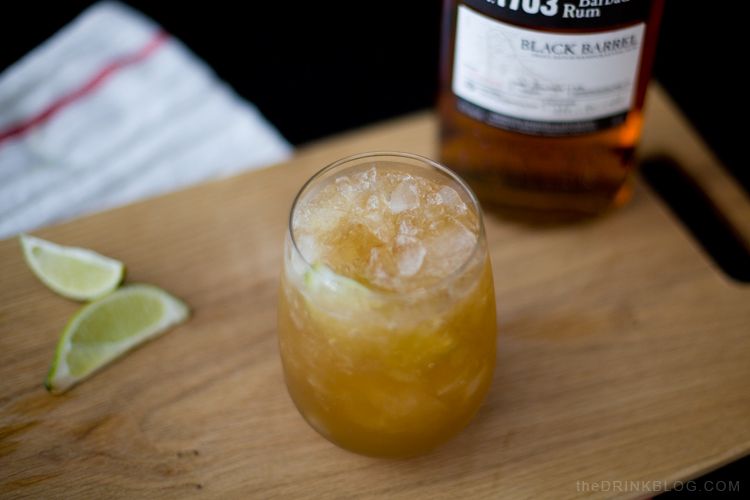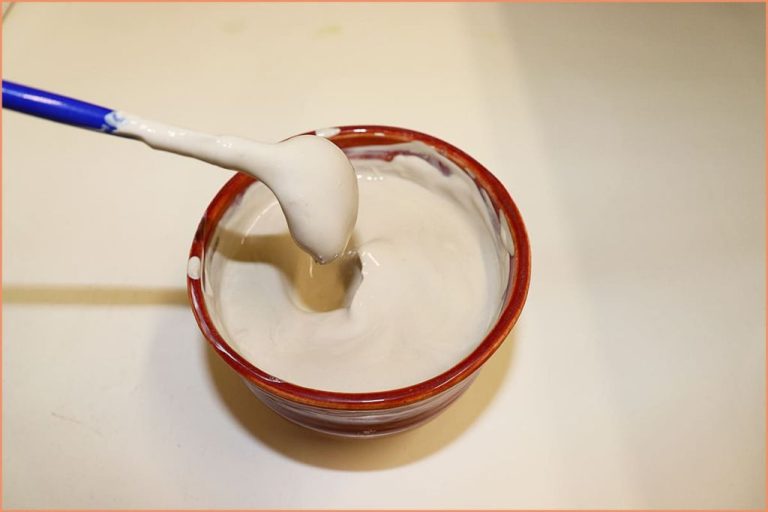Is Grog Just Watered Down Rum?
What is grog?
Grog is an alcohol drink typically made from a mixture of rum and water. The term originated in the British Royal Navy in the 1700s when sailors were given rations of rum, which they often diluted with water or fruit juice to make it last longer.
Originally, grog was made from rum mixed with lemon juice and sugar to make it more palatable. It was introduced in the navy by British Admiral Edward Vernon, who was nicknamed “Old Grog” because he wore grogram coats. He ordered the sailors’ rum rations to be diluted to stop drunkenness on duty.
Today, grog can also refer more broadly to any number of rum-based drinks. Common types of grog include the following:
- Traditional Naval Grog – Made from a mixture of rum, water, lemon juice and sugar.
- Rum and Coconut Water – Rum combined with coconut water, popular in tropical regions.
- Dark Grog – Grog made from darker rums like blackstrap rum.
- Spiced Grog – Flavored with spices like nutmeg, vanilla, cinnamon and cloves.
- Fruit Grog – Mixed with fruits like pineapple, mango or lime.
Rum’s Role in Grog
Rum is the primary ingredient and namesake of traditional grog. Historically, grog referred to a mixture of rum and water. The rum was often diluted with water to make it safer to drink and to ration servings. According to accounts, one part rum was mixed with three or four parts water to make grog.
Diluting the rum had practical purposes aboard ships. The alcohol content was lowered to prevent inebriation which could compromise safety and order on the vessels. Rationing rum was also necessary on long voyages to make supplies last. Despite the dilution, rum still imparted its distinctive flavor to grog.
Even today, rum remains a defining component of grog. Modern grog may have other ingredients added, but rum continues to provide the base spirit. The proportions of rum to water can vary from the historical 1:3 ratio, but rum’s central role lives on in this classic beverage.
https://quizlet.com/112098892/world-history-ap-ch-12-13-terms-id-flash-cards/
Other ingredients in grog
While rum is the primary ingredient in grog, several other components are commonly added as well. These help provide flavor, aroma, and dilution to balance out the strong taste of rum.
One of the most important ingredients besides rum is water. Grog originated as a way for sailors to make their daily rum rations last longer by diluting them with water. The exact ratio of rum to water varies, but grog often contains 1 part rum to 3 or 4 parts water. This dilution reduces the potency of the rum and makes it easier to drink throughout the day. Water was often the only safe drinking liquid aboard ships, so it made sense to blend the rum into it. Modern grog recipes still use water as the primary diluting agent.

Fruit juices are also common in grog, both historically and today. Lime juice in particular helps provide tartness to balance the sweetness of the rum. Other citrus juices like orange, grapefruit, or lemon may be used as well. Tropical juices like pineapple, mango, guava, or coconut also work nicely with the rum flavors. The juices impart sweetness and fruit notes, while cutting through some of the harshness of straight rum.
Various spices and herbs round out grog’s flavor profile. Whole cloves, cinnamon sticks, fresh ginger, nutmeg, vanilla, and mint are frequently used to provide warming spice notes or herbal complexity. Sweeteners like sugar or honey complement the spice additions. The spices diversify the flavor so it’s not just rum and juice. They also give a sensation of warmth when drinking grog.
Alcohol content of grog
The alcohol content of grog depends on the ratio of rum to water used in the drink. According to https://en.wikipedia.org/wiki/Grog, traditional British Navy grog used rum that was 95.5 proof (54.6% ABV). This rum was diluted with water in a ratio of 1 part rum to 7 parts water, resulting in grog that was around 5-7% ABV.
Compared to undiluted rum which can be 80 proof or higher, grog has a significantly lower alcohol percentage due to the dilution with water. However, this dilution impacts the effects of the drink. While rum is sipped slowly, grog can be consumed more quickly which can lead to intoxication. The addition of water also makes the strong taste of rum more palatable.
In summary, the alcohol content of grog depends on the rum used but is generally much lower than undiluted rum due to dilution with water. This impacts the drink’s effects and makes grog easier to consume in larger quantities.
Reasons for Drinking Grog
Grog served several important purposes for sailors and others who drank it regularly. Here are some of the main reasons grog was consumed:
Hydration – Drinking water alone could go bad on long sea voyages, so adding rum to create grog helped keep sailors hydrated. The alcohol content killed bacteria and microbes, making grog safer to drink than plain water. Grog provided vital fluids, preventing dehydration and disease.
Flavor – Sailors grew tired of the taste of stale water. Grog offered a flavored, more palatable drink. The addition of lime juice, sugar, and spices improved the taste significantly. Rum’s strong flavor made the water more enjoyable to consume day after day.
Buzz maintenance – Grog allowed sailors to maintain a constant, low level of intoxication. The small amounts of rum prevented full sobriety, keeping spirits lifted without causing incapacitating drunkenness. The alcohol Stimulated weary sailors burdened with tough working conditions.
Group bonding – Sharing grog together strengthened social connections between sailors. Drinking grog became a daily ritual promoting camaraderie. Grog contributed to team cohesion, with shared rations binding crews together.
Sources:
https://en.wikipedia.org/wiki/Grog
https://sailorjerry.com/en/blog/post/the-storied-history-of-the-drink-we-call-grog
Grog in history and culture
The origins of grog lie with the British Royal Navy in the 17th century. As the story goes, British Admiral Edward Vernon became concerned that drunkenness was impairing his sailors’ abilities. So in 1740, he ordered their rum rations to be diluted with water. This mixture became known as ‘grog’ after Vernon’s nickname “Old Grog” due to the grogram cloak he wore.
Grog quickly became a staple aboard ships and also found popularity among pirates and privateers. Famous pirates like Blackbeard and Calico Jack are known to have consumed grog regularly. The prevalence of grog among seafarers made it into popular culture through classic novels like Treasure Island and films like Pirates of the Caribbean. Lines like “Drink up, me hearties, yo ho!” reflect the close association between pirates and their grog.
Beyond naval and pirate lore, grog has appeared in many literary works over the centuries. From Robert Louis Stevenson’s Treasure Island to Patrick O’Brian’s Master and Commander series, grog has been depicted as an integral part of life at sea.
Making grog
The basic recipe and directions for making grog are quite simple. The classic grog recipe calls for dark rum, water, lemon juice, and sugar. To make grog, simply combine the ingredients in a mixing glass and stir until the sugar dissolves. The rum-to-water ratio can be adjusted based on preference, but classic grog is approximately 1 part rum to 4 parts water. Many recommend using a high quality dark rum like Myers’s.
Some tips and tricks for making excellent grog include:
- Use fresh lemon juice for brightness and acidity
- Add the rum last and taste as you go to achieve the desired strength
- Make a large batch for parties by scaling up the basic recipe
- Serve over ice for maximum refreshment
Popular add-ins and tweaks to give grog more flavor include:
- Freshly grated nutmeg
- Lime juice or slices
- Cinnamon
- Ginger beer
- Tropical fruit juices
The beauty of grog is experimenting with different rums, sweeteners, and spice combinations to create your perfect custom blend. It’s an easy breezy cocktail for summer sipping.
Drinking grog
Grog is best served cold and diluted with water. The traditional way to drink grog is to mix one part rum with three or four parts water. This dilutes the rum’s alcoholic strength while still providing flavor. Grog can be served on ice in a tall glass, ideally with a slice of lime or lemon.
Grog makes for a refreshing summer cocktail, perfect for beach parties, boating, or anytime you want a light, citrusy drink. It’s commonly associated with pirates and sailors, so it also works well for pirate- or nautical-themed gatherings. Grog goes well with tropical flavors like pineapple juice, coconut, or mango. It can be enjoyed on its own or incorporated into fun, fruity cocktails.
Some popular grog cocktail recipes include:
- Bahama Mama – blends grog with pineapple juice, coconut cream, and grenadine.
- Shark Attack – mixes grog with blue curacao and pineapple juice.
- Sea Breeze – incorporates grapefruit juice and cranberry juice with grog.
Grog’s versatility makes it easy to customize for any occasion. Just add your favorite fruit juices or tropical mixers to create a personalized tropical cocktail.
Grog vs other rum drinks
Grog is distinct from other rum-based drinks like rum and coke, daiquiris, and punch in a few key ways:
Rum and coke simply combines rum with cola. Grog involves diluting rum with water, and often includes other ingredients like lime juice, sugar, nutmeg, or cinnamon (https://en.wikipedia.org/wiki/Grog).
A daiquiri combines rum with citrus juice and sugar. While grog can contain citrus and spices, the main difference is that a daiquiri isn’t diluted with water. Daiquiris retain a higher alcohol content compared to grog.
Punch is a broad term for mixed drinks containing fruit juice, soda, tea, or wine. Some rum punches exist, but they have more complex recipes involving multiple ingredients. Grog is unique for its simplicity – rum cut with water. Historical grog had minimal extra ingredients beyond lime juice or spices for flavor.
So while grog involves rum like other mixed drinks, its distinguishing feature is the dilution with water, giving it a lower alcohol content than many cocktails.
The future of grog
Grog has seen a huge resurgence in popularity recently, thanks in large part to its prominence with influencers and YouTube personalities. The drink “Grog” by Cold Ones sold an impressive 250,000 units in its first month on the market, showing the viral potential of grog in today’s social media landscape.
With this newfound popularity, many industry experts predict grog will continue to grow as a coveted drink choice. According to research from Drinkstrade.com.au, Australia’s alcohol market is especially bullish on grog, with influencer brands sparking interest and demand. As more consumers try high-quality grog drinks and share their experiences online, the mystique and allure of grog is likely to spread.
Some foresee grog becoming as ubiquitous as rum itself, evolving into a household name beyond just pirate lore. With the right branding and marketing, grog could expand from its niche status into a mainstream spirit worldwide. Thanks to social media and internet virality, the possibilities seem endless for this historic beverage.


